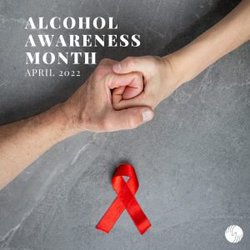When someone is struggling with a substance use disorder, they can prevent the people closest to them from living their own lives. Those closest to the addicted individual may feel an urge to protect their loved on from experiencing the painful consequences brought on by an active substance use disorder. These protective urges can lead to enabling behaviors or other dysfunctional relationship dynamics, which may culminate in a codependent relationship.
Codependency within a relationship between an addict and their loved one can increase the intensity of the substance use disorder, and even thwart recovery efforts. While the co-dependent individual has good intentions on the surface, their caretaking behaviors can become enabling. Understanding the role of codependency in the cycle of addiction can help both the addicted person and their loved ones reach their recovery goals.
What is Codependency?
Codependency, also called a “relationship addiction”, is an emotional and behavioral condition that impacts an individual’s ability to have mutually beneficial, healthy interpersonal relationships1. In many cases, those who struggle with codependency develop relationships that are one-sided, destructive, and/or abusive1. Like addiction, codependency is not a moral flaw or a characteristic of a bad person.
Codependency and Substance Use Disorders often go hand-in-hand. Codependency often manifests in people who have relationships with a person with a chemical dependency issue or the addicted individual themselves1. It is important to remember that codependency is a learned behavior that can be passed down generationally1. Therefore, a codependent dynamic can develop in all interpersonal relationships, not just romantic ones.
In a relationship with someone struggling with a substance use disorder, a codependent individual can appear helpful and loving. They may make excuses for the addicted individual or hide their behaviors, ultimately shielding them from facing their own consequences. The entanglement of this type of relationships can become very dangerous and difficult to discontinue.
Common Signs of Codependency1
- An exaggerated sense of responsibility for others
- A tendency to confuse love and pity,
- A tendency to do more than their share, all of the time
- A tendency to become hurt when people don’t recognize their efforts
- An unhealthy dependence on relationships. The co-dependent will do anything to hold on to a relationship; to avoid the feeling of abandonment
- An extreme need for approval and recognition
- A sense of guilt when asserting themselves
- A compelling need to control others
- Lack of trust in self and/or others
- Fear of being abandoned or alone
- Difficulty identifying feelings
- Rigidity/difficulty adjusting to change
- Problems with intimacy/boundaries
- Chronic anger
- Lying/dishonesty
- Poor communications
- Difficulty making decisions
Codependency and Substance Use Disorders
Codependency can have significant consequences for the addicted individual. Codependent relationships often include enabling behaviors that will fuel the active substance use and potentially undermine treatment and recovery efforts. Common examples of enabling behaviors are:
- Making excuses for the addicted loved one’s behaviors
- Providing money for the purchase of substances
- Taking responsibility for the emotional/physical well-being of the using individual
- Minimizing the severity of the use
- Treating the using individual like a child or acting superior
When Codependency and Addiction Hit Home
The first step in changing a behavior is to start understanding it. Gathering resources and getting educated on addiction and how it extends into relationships is a great starting point. Change and growth are necessary to find freedom from both addiction and codependency. Reaching out for assistance or professional help can result in a healthier, more fulfilling life for everyone involved.
Resources
Mental Health America. Co-Dependency (accessed 02/09/2022). www.mhanationa.org/co-dependency
